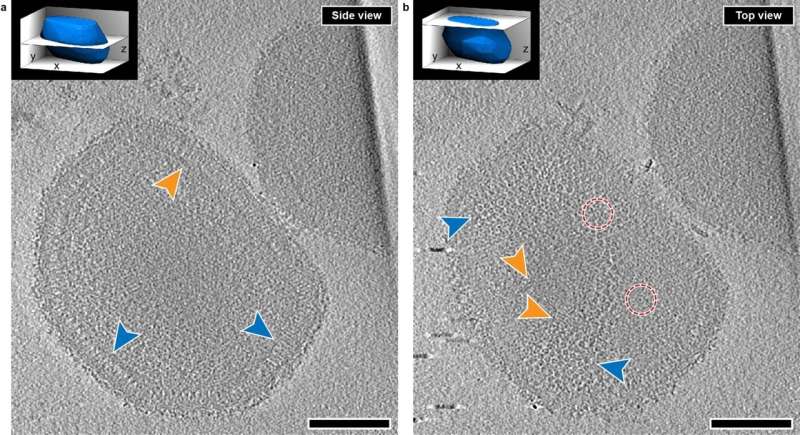This article has been reviewed according to Science X's editorial process and policies. Editors have highlighted the following attributes while ensuring the content's credibility:
fact-checked
peer-reviewed publication
proofread
Vaccinia virus: New insights into the structure and function of the poxvirus prototype

An outbreak of infections with the mpox virus—formerly known as monkeypox—in Europe in 2022 led to a rise in interest in poxviruses. An international research team has now investigated the structure of the poxvirus prototype, the vaccinia virus (VACV). The work is published in the journal Nature Structural & Molecular Biology.
The team found that trimers of the A10 protein, an abundant protein of the virus, play an important role in the formation of the mature virus. These trimers may also be involved in interactions with other cell components during infection, which could provide a starting point for the development of antiviral therapies against viruses from the poxvirus family.
The poxvirus prototype, the vaccinia virus (VACV), was used in the past as a live vaccine to eradicate smallpox. Despite intensive research, important questions regarding the biogenesis and structure of the mature virus (MV) remain unanswered.
A10 trimers important for virus assembly and perhaps beyond
The infectious MV is a quasi-brick-shaped particle measuring roughly 250 nm × 350 nm × 200 nm. It consists of an oval core enclosing the viral genome and the proteins necessary for transcription—of DNA into messenger RNA (mRNA)—early in infection. The MV is composed of up to 200 proteins. The proteins responsible for the virus' prominent palisade layer were hitherto unknown.
An international research team led by Professor Jacomina Krijnse Locker, LOEWE DRUID—LOEWE Professorship for Neglected Infectious Diseases/Imaging Techniques at the Paul-Ehrlich-Institut, investigated the molecular composition and structure of VACV. The study combined high-resolution imaging techniques such as cryo-electron tomography (cryo-ET), subtomogram averaging (STA) and AlphaFold2 (AF2) to decipher the molecular architecture of the VACV core.
In using these different techniques, the researchers found that the prominent palisade layer of the virus' core is composed of the A10 protein. The research team was able to show that the protein forms A10 trimers.
These A10 trimers are flexibly distributed on the surface of the core, displaying no specific pattern. A10 could potentially be involved in interactions with cell components after the virus enters the cell during the early phase of the infection cycle. Further studies will aim to clarify the exact functions of the A10 trimers and other proteins in connection with VACV infection.
More information: Jiasui Liu et al, The palisade layer of the poxvirus core is composed of flexible A10 trimers, Nature Structural & Molecular Biology (2024). DOI: 10.1038/s41594-024-01218-5
Journal information: Nature Structural & Molecular Biology
Provided by Paul-Ehrlich-Institut - Bundesinstitut für Impfstoffe und biomedizinische Arzneimittel




















